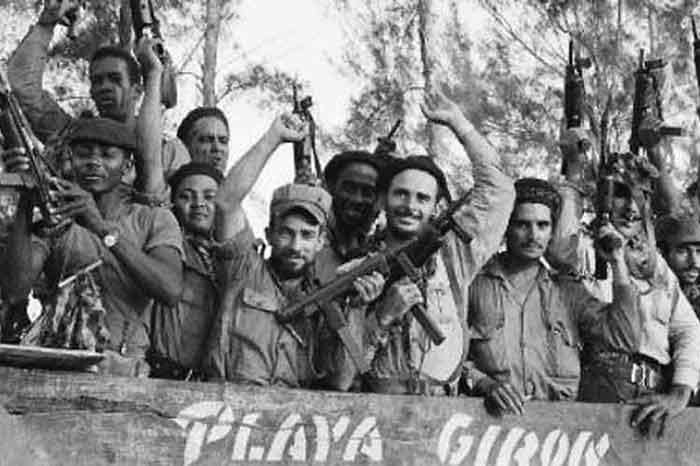
Around 5:30 pm on April 19, 1961, the last strongholds of the 2506 mercenary brigade succumbed to the Cuban national forces. During those April dates, the entire country was aware of the noise in the Playa Girón and Playa Larga arenas, where the Empire suffered its first military defeat in Latin America.
For months, the escalation of differences between the United States and Cuba had been increasing, and since the beginning of 1961, tension was obvious. People who lived through those years say that the weight of divergences was felt in the air, the oppressive silence of what was to come. It was like the prelude to an event that would have to be faced without fear, and each new chapter of the dispute made it closer and inevitable.
The situation was also evident in these lands. It began to be so in the mid-1960s when the National Revolutionary Militias were organized here with their combat battalions in Las Tunas, Manatí, and Jobabo, and the interest of workers, young people, and women in defending the Revolution began to be more explicit.
April 1961 found Battalion 102 of Las Tunas in the northern area of Holguín, receiving training. They were entrenched from the 15th when flotillas of planes with Cuban insignia bombed three airports in the country (the San Antonio de los Baños air base, Ciudad Libertad, and the Antonio Maceo airport, in Santiago de Cuba), until the 20th, the date when in addition to the defeat of the enemy, it was clear that there was no danger of landing in the East of the country.
Fidel Castro led the actions on the ground while men of many battles assumed the direction of critical points in Cuba. Che Guevara, Pinar del Río; Juan Almeida, the center region; Guillermo García, the Managua tactical body; Ramiro Valdés, head of Military Intelligence and Counterintelligence; and Raúl Castro, to the east of the Big Island.
From this area of Cuba, where the Las Tunas troops were located, special attention was paid, among others, to the maneuvers of the traitor Higinio Díaz, leading 168 men, who marauded from the Santa Ana ship along the coasts near Imías; also from other points between Baracoa and Punta Alegre (Camagüey) where boats were seen to distract attention and confuse the exact site of the landing.
The battle began; the rifles did not click and more than one man from Las Tunas went to the Bay of Pigs to express his commitment to everyone's work and weave their life story. After 63 years, the conviction accompanies them, and the work, always perfectible, advances.
TIMELINE OF THE BAY OF PIGS INVASION
In the first days of April 1961, the mercenary troops of the 2506 brigade had nearly 1,400 men.
April 5: JF Kennedy, newly elected president of the United States, approved the so-called White Paper, with new measures to destroy the Revolution. Immediately, Raúl Roa, Cuban Foreign Minister, described the document as a declaration of Undeclared War.
April 10: Kennedy orders the transfer of invading troops from Guatemala to Puerto Cabezas, in Nicaragua, the last stage of training.
April 13: sabotage of the El Encanto Store. Fe del Valle dies.
April 15: Air attack on the airports of San Antonio de los Baños, Santiago de Cuba, and Ciudad Libertad.
April 16: Raúl Roa demonstrated at the headquarters of the United Nations (UN) that the United States had attacked with B-26 aircraft, similar to the Cuban Air Force.
April 16: Funeral of the victims at noon that Sunday. From an improvised platform, Fidel bid them a last farewell and proclaimed the socialist character of the Cuban Revolution.
April 16: At night, reports of boats began to arrive near the coast, and at midnight, from Punta Perdiz, at the entrance to the Bay of Pigs. An hour later, the first shots began at Playa Girón.
April 17: At 3:00 am there was already fighting in Playa Girón and Playa Larga, the final place where they landed to create a beachhead.
April 17: At mid-morning, Fidel announced Communiqué 1 of the Revolutionary Government to the people of Cuba. “We are fighting in defense of the sacred Homeland…”
April 18: Fidel arrived at the scene of operations, and transferred his General Staff to the Australia sugar mill.
April 19: “The enemy has suffered a crushing defeat,” Communiqué 4 told the people of Cuba.





